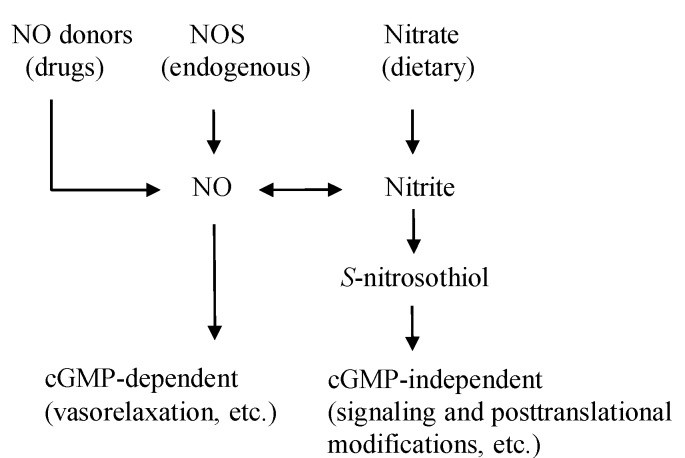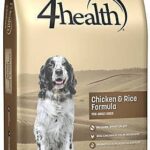Nitric oxide (NO) is a vital molecule produced naturally by your body, playing a crucial role in numerous aspects of your health, from blood flow regulation to immune function. While your body generates NO, dietary intake of certain foods can significantly boost its production, offering a natural way to enhance your overall well-being. This article delves into the science behind nitric oxide and explores the best foods to incorporate into your diet to elevate your NO levels and reap the health benefits.
Understanding Nitric Oxide and Its Importance
Nitric oxide is a vasodilator, meaning it helps relax and widen blood vessels. This crucial function allows for improved blood circulation, enabling efficient delivery of oxygen and nutrients throughout your body. Beyond vasodilation, NO is involved in:
- Cardiovascular Health: Maintaining healthy blood pressure, reducing plaque buildup in arteries, and preventing blood clots.
- Exercise Performance: Enhancing blood flow to muscles, improving endurance and reducing muscle fatigue.
- Brain Function: Supporting healthy blood flow to the brain, potentially improving cognitive function and memory.
- Immune System: Playing a role in immune cell function and defense against pathogens.
- Insulin Sensitivity: Improving glucose uptake and potentially mitigating insulin resistance.
When your body doesn’t produce enough nitric oxide, or when its availability is reduced, it can contribute to various health issues, including hypertension, heart disease, erectile dysfunction, and type 2 diabetes. Fortunately, diet offers a powerful tool to naturally support healthy NO levels.
The Dietary Nitrate-Nitrite-Nitric Oxide Pathway
While our bodies produce NO through the enzyme nitric oxide synthase (NOS), there’s another significant pathway involving dietary nitrate. Foods, particularly certain vegetables, are rich in nitrates. Once consumed, these nitrates embark on a fascinating journey through your body:
- Ingestion and Absorption: Dietary nitrates are ingested and absorbed in the upper digestive tract.
- Salivary Conversion: About 25% of absorbed nitrate is transported to the salivary glands and secreted into saliva. Beneficial bacteria on the tongue then convert nitrate into nitrite.
- Stomach and NO Production: When nitrite-rich saliva is swallowed, the acidic environment of the stomach facilitates the conversion of nitrite into nitric oxide and other nitrogen oxides. This process is enhanced by the presence of polyphenols and vitamin C, often found in the same nitrate-rich foods.
- Systemic Circulation and Tissue Delivery: Some nitrite escapes stomach conversion and enters the bloodstream, circulating throughout the body and reaching various tissues, including muscles. Here, it can be further reduced to NO, especially in oxygen-deprived (hypoxic) conditions.
This “entero-salivary pathway” provides a backup system for NO generation, especially when the NOS pathway might be compromised due to factors like aging, obesity, or endothelial dysfunction. By consuming foods high in nitrates, we can effectively fuel this pathway and boost our body’s NO production.
Top Foods High in Nitric Oxide Precursors
To increase your nitric oxide levels through diet, focus on incorporating foods rich in nitrates. Vegetables, particularly leafy greens and root vegetables, are nutritional powerhouses in this regard. Here’s a breakdown of some of the top contenders:
Leafy Green Vegetables: Nitrate-Rich Champions
Leafy green vegetables are at the top of the list when it comes to nitrate content. They are incredibly versatile and can be easily incorporated into salads, smoothies, side dishes, and main courses.
-
Spinach: Spinach is a nutritional superstar, packed with vitamins, minerals, and, notably, high levels of nitrates. Whether you enjoy it raw in salads or cooked in various dishes, spinach is an excellent choice for boosting NO.
-
Arugula (Rocket): This peppery green is another excellent source of nitrates. Its distinctive flavor adds a zesty kick to salads and pizzas.
-
Lettuce (especially darker varieties like Romaine): While iceberg lettuce is lower in nitrates, romaine and other darker lettuces still contribute a decent amount. They are salad staples and can be used in wraps and sandwiches.
-
Kale: This hardy green is not only rich in nitrates but also boasts a wealth of other nutrients. Kale can be sautéed, baked into chips, or added to soups and stews.
-
Mustard Greens: With a slightly spicy flavor, mustard greens offer a good dose of nitrates and other beneficial compounds. They are often enjoyed cooked in Southern and Asian cuisines.
Root Vegetables: Earthy Nitrate Sources
Root vegetables, growing underground, also tend to accumulate nitrates. These vegetables offer a hearty and satisfying way to increase your dietary nitrate intake.
-
Beets: Beets are arguably the most famous nitrate-rich vegetable. Beetroot juice, in particular, has been extensively studied for its ability to improve exercise performance and lower blood pressure due to its high nitrate content.
-
Carrots: While not as high as beets or spinach, carrots still provide a respectable amount of nitrates. They are a versatile and readily available vegetable, enjoyed raw, cooked, or juiced.
-
Radishes: These crunchy root vegetables offer a peppery bite and a moderate amount of nitrates. They are great in salads or as a crunchy snack.
-
Turnips: Both the turnip root and turnip greens are good sources of nitrates. Turnips can be roasted, mashed, or added to soups and stews.
-
Celery: Celery, often considered a low-calorie snack, surprisingly contains a significant amount of nitrates, particularly in the stalks.
Other Vegetables and Foods with Nitrates
Beyond leafy greens and root vegetables, other foods can contribute to your nitrate intake:
-
Cruciferous Vegetables (Broccoli, Cabbage, Cauliflower): These vegetables, while lower in nitrates compared to leafy greens, still offer some contribution and are packed with other health-promoting compounds.
-
Fruits (Strawberries, Bananas, Oranges): Fruits generally contain lower levels of nitrates than vegetables, but some, like strawberries, bananas, and oranges, offer a small amount.
-
Garlic and Onions: While not direct sources of nitrates, garlic and onions contain compounds that can enhance nitric oxide production in the body.
Health Benefits of Foods High in Nitric Oxide
Incorporating Foods High In Nitric Oxide into your diet can translate to a range of potential health benefits, supported by scientific research:
Enhancing Cardiovascular Health
- Lowering Blood Pressure: Nitric oxide’s vasodilating properties help relax blood vessels, leading to reduced blood pressure. Studies have shown that diets rich in nitrate-containing vegetables, like beetroot juice supplementation, can significantly lower blood pressure in healthy individuals and those with hypertension.
- Improving Endothelial Function: Nitric oxide protects the endothelium, the inner lining of blood vessels, from damage and dysfunction. This is crucial for preventing atherosclerosis and other cardiovascular diseases.
- Reducing Arterial Stiffness: Dietary nitrates may help improve arterial stiffness, a major factor contributing to hypertension and cardiovascular risk, especially in older adults.
Boosting Exercise Performance
- Increased Endurance: By improving blood flow to working muscles, nitric oxide enhances oxygen and nutrient delivery, potentially increasing exercise endurance and reducing fatigue. Beetroot juice has gained popularity among athletes for its performance-enhancing effects, attributed to its high nitrate content.
- Improved Muscle Efficiency: Nitric oxide may improve mitochondrial efficiency in muscles, allowing them to use oxygen more effectively during exercise.
Supporting Insulin Sensitivity and Metabolic Health
- Improved Glucose Uptake: Nitric oxide plays a role in insulin signaling and glucose uptake by cells. Increasing NO availability through diet may help improve insulin sensitivity and manage blood sugar levels.
- Reduced Insulin Resistance: Studies suggest that dietary nitrate may help improve insulin resistance, a hallmark of type 2 diabetes and metabolic syndrome. NO can enhance insulin signaling pathways and improve glucose metabolism.
Potential Benefits for Other Lifestyle-Related Diseases
Research is ongoing, but dietary nitrates and increased NO availability show promise in potentially mitigating other lifestyle-related diseases:
- Chronic Obstructive Pulmonary Disease (COPD): While more research is needed, some studies suggest that dietary nitrate may improve exercise capacity and reduce blood pressure in COPD patients. NO’s bronchodilating effects and role in lung function may be beneficial.
- Osteoporosis: Nitric oxide is involved in bone metabolism, and some studies suggest that nitrate supplementation may have a positive impact on bone health. However, more research is needed to fully understand this link.
- Cancer Prevention: Despite early concerns about nitrosamines, current evidence suggests that dietary nitrates from vegetables are not linked to increased cancer risk and may even have protective effects. Vegetable-rich diets are generally associated with lower cancer risk.
].](https://cdn.ncbi.nlm.nih.gov/pmc/blobs/60b8/4488823/ebb14c061149/nutrients-07-04911-g003.jpg)
Safety and Considerations
While the health benefits of incorporating nitrate-rich foods are compelling, it’s essential to address safety considerations:
- Nitrate vs. Nitrite vs. Nitrosamines: It’s important to distinguish between nitrates (found naturally in vegetables), nitrites (formed from nitrates in the body), and nitrosamines (potentially harmful compounds that can form from nitrites reacting with amines, especially in processed meats cooked at high temperatures). The nitrates in vegetables are generally considered safe and beneficial. The concern about nitrosamines is primarily related to processed meats, not vegetables.
- Methemoglobinemia in Infants: Historically, there were concerns about nitrates in drinking water causing methemoglobinemia (“blue baby syndrome”) in infants. However, this is now considered rare and primarily associated with contaminated well water, not dietary nitrate from vegetables in adults.
- Overall Dietary Balance: Focus on a balanced dietary approach. While nitrate-rich vegetables are beneficial, they should be part of a diverse diet rich in fruits, whole grains, lean proteins, and healthy fats.
Practical Tips for Increasing Nitric Oxide through Diet:
- Load up on Leafy Greens: Aim to include a serving of leafy greens like spinach, arugula, or kale in your daily diet.
- Embrace Beets: Incorporate beets into your meals as roasted beets, beetroot salads, or beetroot juice.
- Variety is Key: Include a variety of nitrate-rich vegetables to ensure a broad spectrum of nutrients.
- Combine with Vitamin C: Consuming vitamin C-rich foods (citrus fruits, berries, bell peppers) alongside nitrate-rich vegetables may enhance NO production.
- Limit Antibacterial Mouthwash: Overuse of antibacterial mouthwash can reduce the beneficial bacteria on your tongue that are essential for converting nitrate to nitrite.
Conclusion: Harnessing the Power of Nitric Oxide-Rich Foods
Foods high in nitric oxide precursors, particularly nitrate-rich vegetables, offer a natural and delicious way to support your health. By incorporating these foods into your daily diet, you can potentially enhance cardiovascular health, boost exercise performance, improve metabolic function, and contribute to overall well-being. Embrace the power of plants and unlock the natural benefits of nitric oxide for a healthier you.
References
The references from the original article should be listed here in markdown format. For example:
[1] Author et al. (Year). Title. Journal. Volume(Issue):Pages. Link
(Please note: You would need to extract and format all references from the original article provided to complete this section.)

